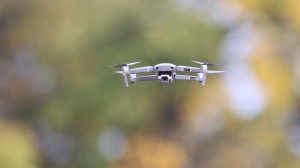Plans to use space satellites, drones, math models to monitor ecosystems in Belarus

MINSK, 27 July (BelTA) – Space satellites, unmanned aerial vehicles, and mathematical modeling methods will be introduced into the monitoring of ecosystems in Belarus. Prospects of environmental monitoring in the country were outlined by Aleksandr Pugachevsky, Head of the Forest Ecology and Dendrochronology Lab at the Experimental Botany Institute of the National Academy of Sciences of Belarus, during the press conference held to review results and perspectives of 30 years of monitoring natural ecosystems, BelTA has learned.
Aleksandr Pugachevsky believes that remote methods relying on space satellites and unmanned aerial vehicles look promising for the development of the national environmental monitoring system. “They provide more or less representative data from the entire territory of our country despite the fact that we have about 1,250 sites for observing designated conservation areas and 920 sites for observing the plant life. Because of that it is sometimes difficult to say that our evaluations are precise or objective if we don't use remote methods. They represent opinions of experts and can be approximate at times. The use of remote methods will provide firmer scientific foundation, more precise foundation for our studies,” the scientist is convinced.
Another promising avenue for the development of Belarusian ecology for the biologist is the development of a system of prediction estimates based on monitoring data. In other words, on mathematical models and other kinds of models. Certain progress along this avenue has been secured in forest ecosystem studies. “Due to climate change and the lack of moisture in forests we've seen a massive increase in forest pests. The modeling method has helped us regulate these processes,” Aleksandr Pugachevsky noted.
The biologist is also convinced that it is necessary to have monitoring observation systems at a certain number of observation sites. For instance, the institute has started setting up automated wells made by Belarusian companies for monitoring subsurface water levels and the temperature of surface soils. It allows making monitoring more effective and thorough. However, human resources and financial resources are still needed. Their lack significantly slows down the development of ongoing researches.













